Awesome Reasons To Visit The Galapagos Islands
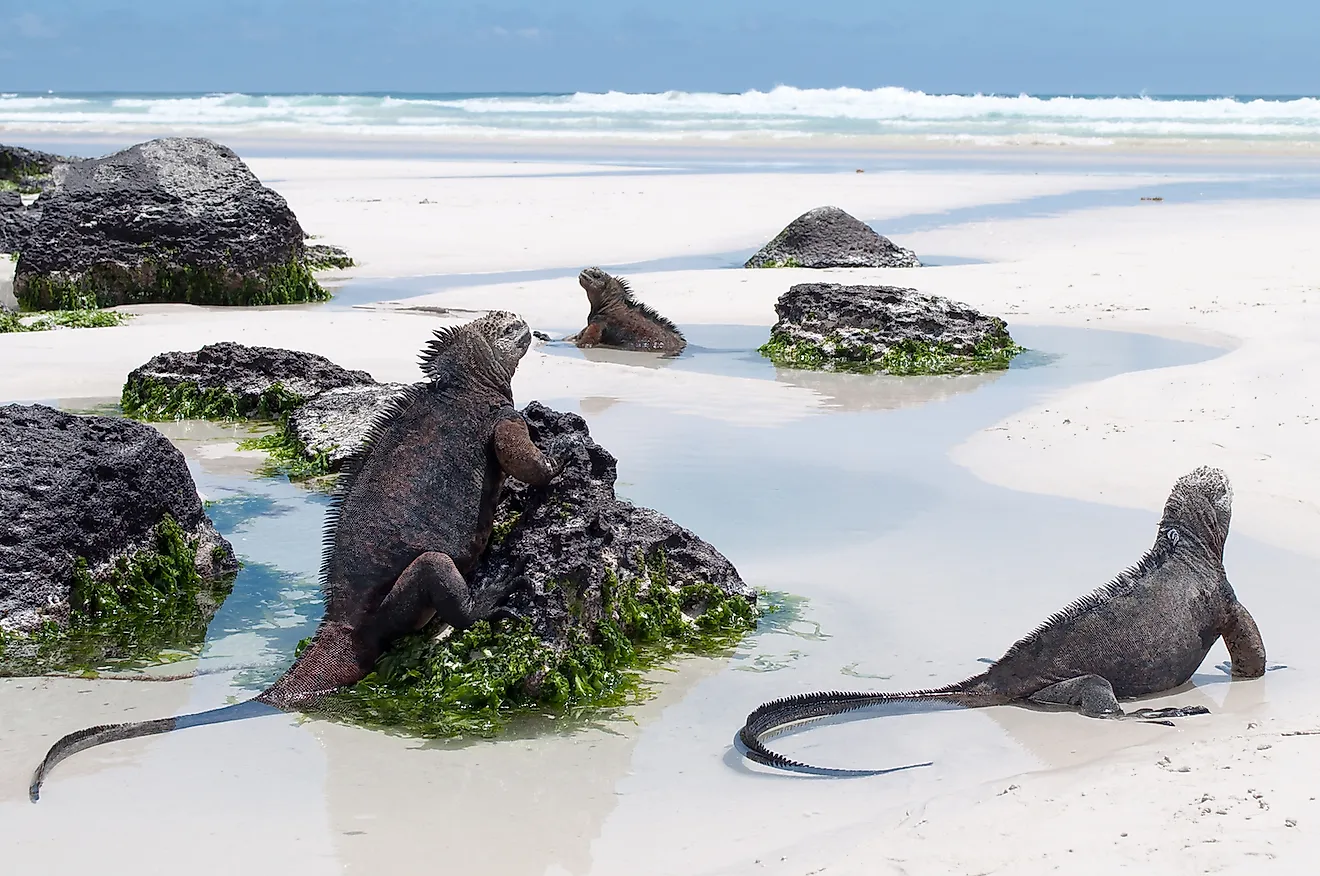
- Galapagos marine iguanas, creatures Charles Darwin called hideous, frequently sneeze out salt crystals from their body caused by their saline rich seaweed diet.
- The Galapagos Penguin is the only penguin species to live in the North American hemisphere.
- The archipelago of islands are 600 miles away from any continent, and their remote location led to unique animal adaptations such as flightless birds and giant tortoise living up to 200 years.
Just over six hundred miles off the coast of Ecuador and in the South American continent, you will discover an archipelago of 19 volcanic islands that some have called a living museum. It is here where Charles Darwin first began his writings on evolution and natural selection. Darwin arrived in 1835 aboard his ship, the Beagle, at this unique marine ecosystem, located at the intersection of three ocean currents swirling in from the Pacific and Arctic oceans. Today the remote location, seismic activity, and marine diversity has become home to pristine beaches and active volcanoes that serve as a protected reserve for its endemic species of flightless birds, giant tortoise, and huge cacti. In 1978 the archipelago and surrounding waters were declared a UNESCO world heritage site. The Ecuadorian government passed laws in 1986 and again in 1998 to strengthen the conservation and sustainability of the Galapagos. With 12 native terrestrial mammal species, 36 endemic varieties of reptiles, and 2,900 different marine species calling the archipelago home, there are hundreds of great reasons to visit the Galapagos. Read on to discover ten of them.
10. The Wet Season
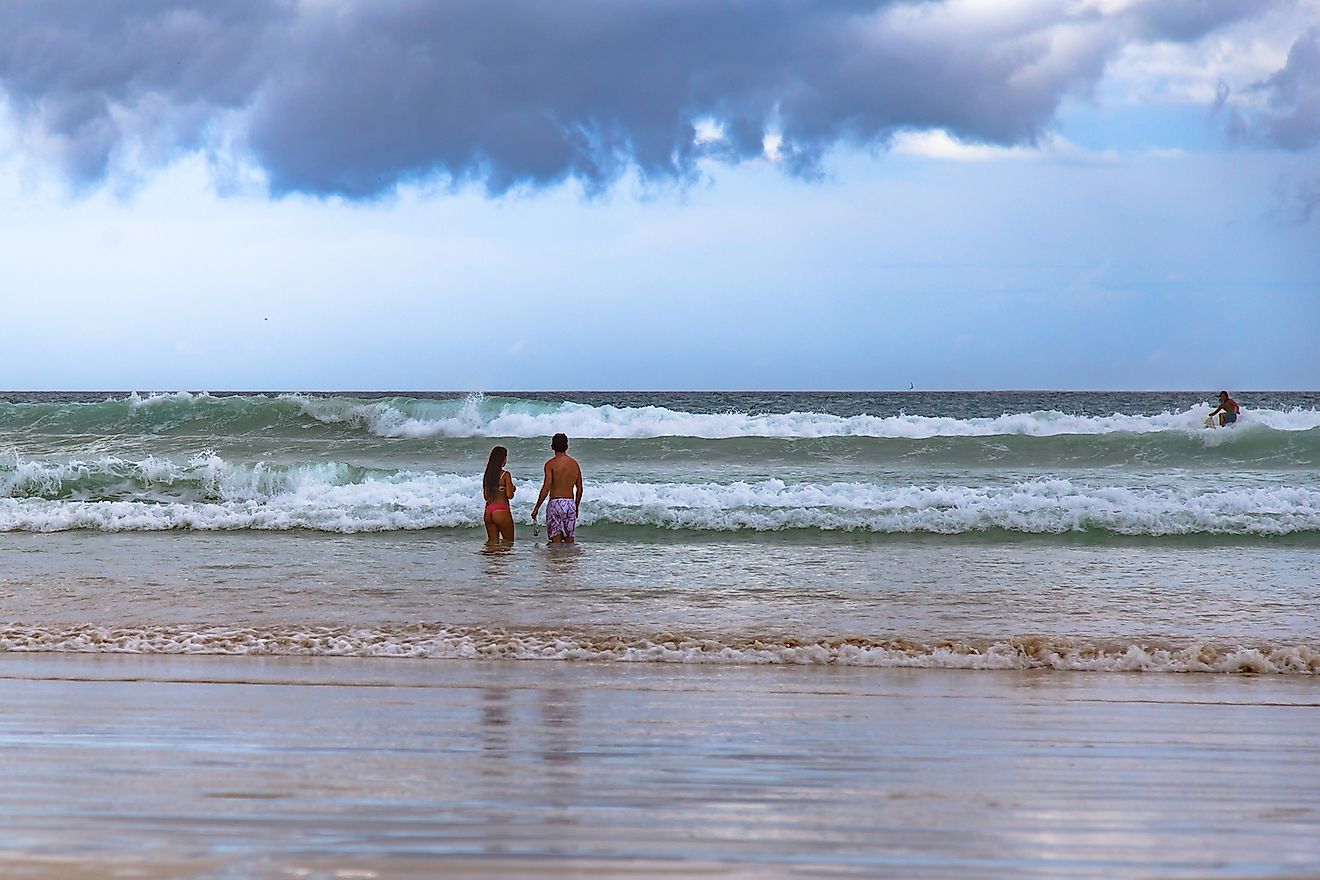
Located directly on the equator and more than 600 miles away from the nearest continent of South America, the Galapagos Islands are situated within the equatorial eastern Pacific, and lie in the trade wind zone. As a result, the southeastern trade wind greatly impacts the climate and creates two seasons: the rainy wet season and the cloudy dry season. Both seasons offer unique opportunities for visitors. During the wet season temperature can reach 80°F above and below the water, and daily rains punctuate blue skies. The calmed currents of the rainy season are the ideal time to see visiting green sea turtles and Albatross, as well as mating and nesting for the blue-footed boobies, cormorants, and marine iguanas.
9. The Dry Season
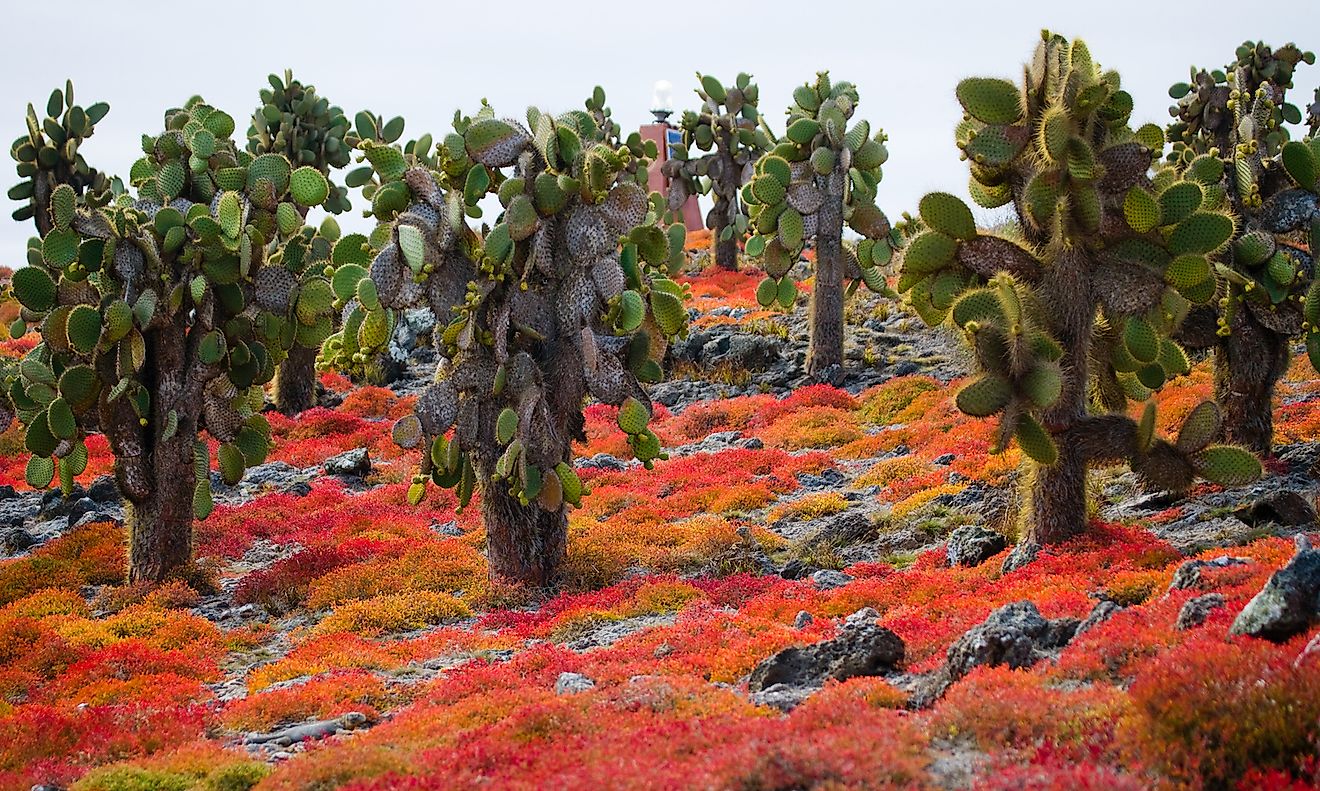
While the wet season brings visitors like sea turtles and curious humans, in June when the trade wind strengthens and ushers in stronger currents and cooler temperatures, the islands are often enveloped in breathtaking views of mists and clouds before bright blue skies shine overhead and very little rain falls. The cooler temperatures make it not only more comfortable for the endemic species, but for tourists as well who come during the dry season for better hiking and glimpses of wildlife at higher elevations and diverse fish species attracted to the region by the upwelling of the Panama and Cromwell ocean currents.
8. Volcanoes
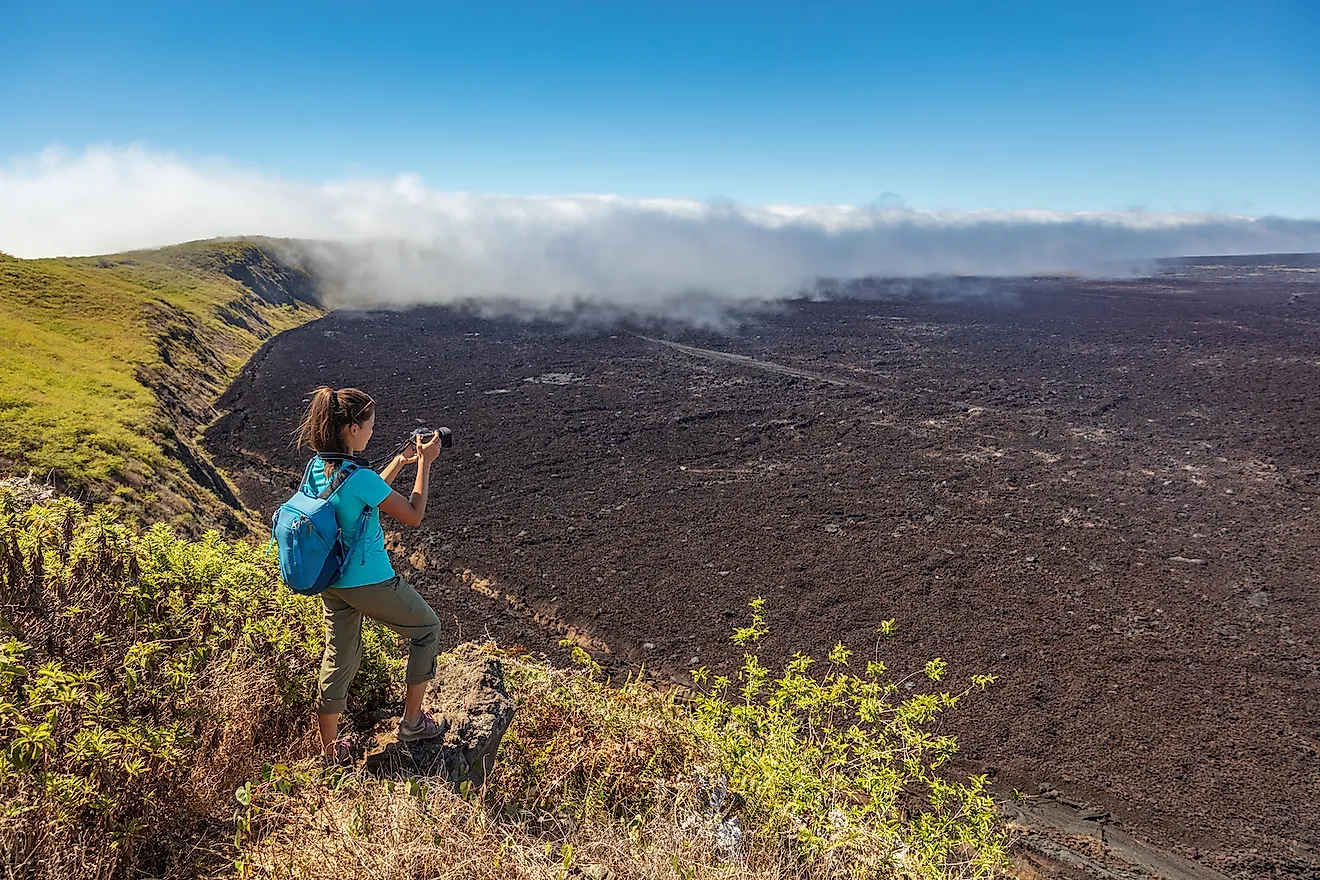
While the flora and fauna are the highlights of the islands, the chance to visit active volcanoes is another draw. These islands were formed due to ongoing seismic activity along the Nazca plate, deep below the ocean where magma still bursts through and the plate itself travels 2 inches east each a year. Above ground visitors can explore the volcanoes of Daphne Major, Sierra Negra, and Volcan Wolf, the highest of the Galapagos volcanoes at 1.06 miles above sea level on Isabela island.
7. Beaches
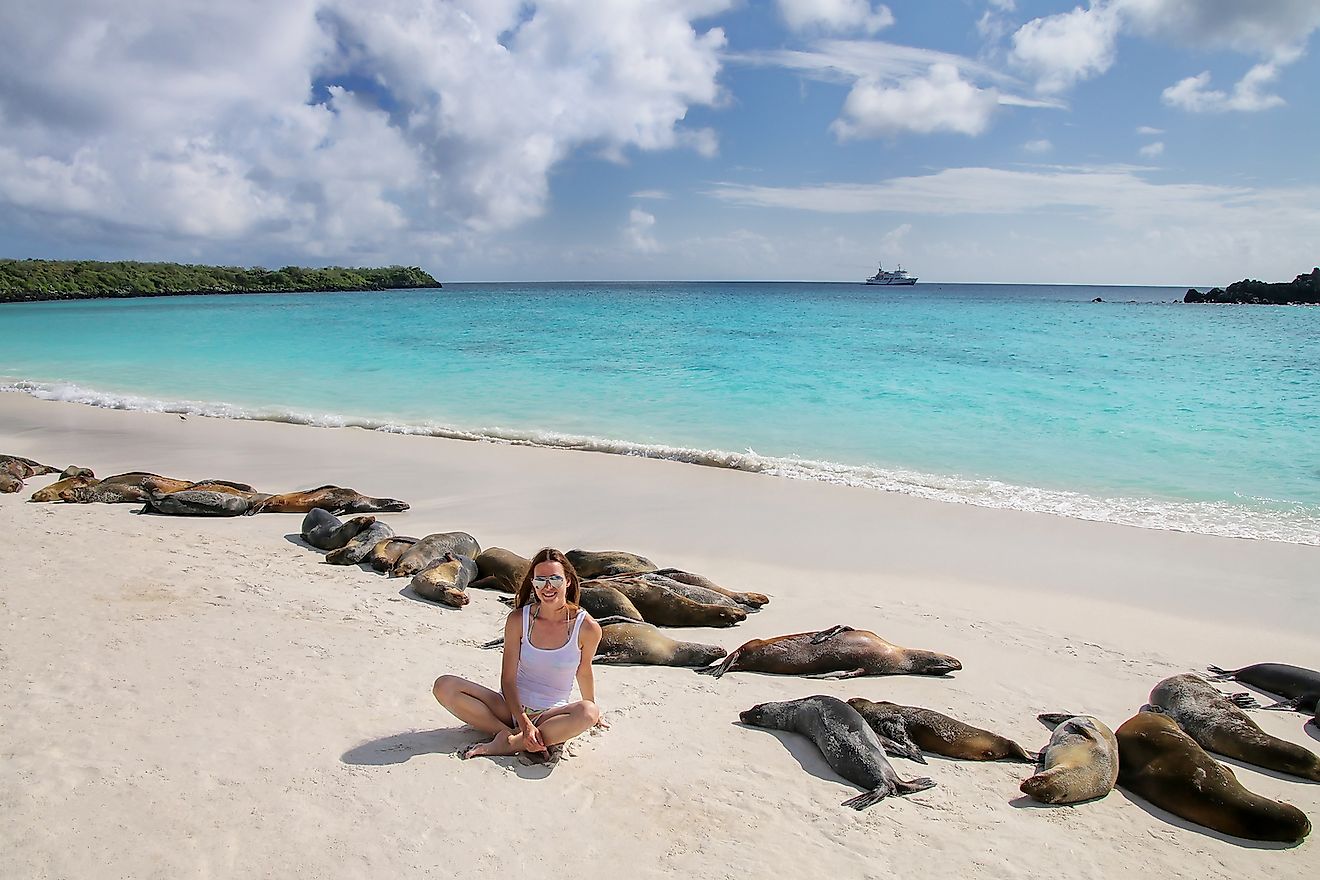
As one of the most protected places on earth, the beaches of the Galapagos are secluded and pristine with white sand, rocky outcroppings, and turquoise waters. While the number of visitors is restricted, you won’t necessarily find yourself alone on the beach as crowds of sea lions, pelicans, and the occasional shark enjoy the shoreline. Remote and largely undeveloped, the beaches of the Galapagos Islands are a major draw for visitors.
6. Marine Reserve and Water Activities
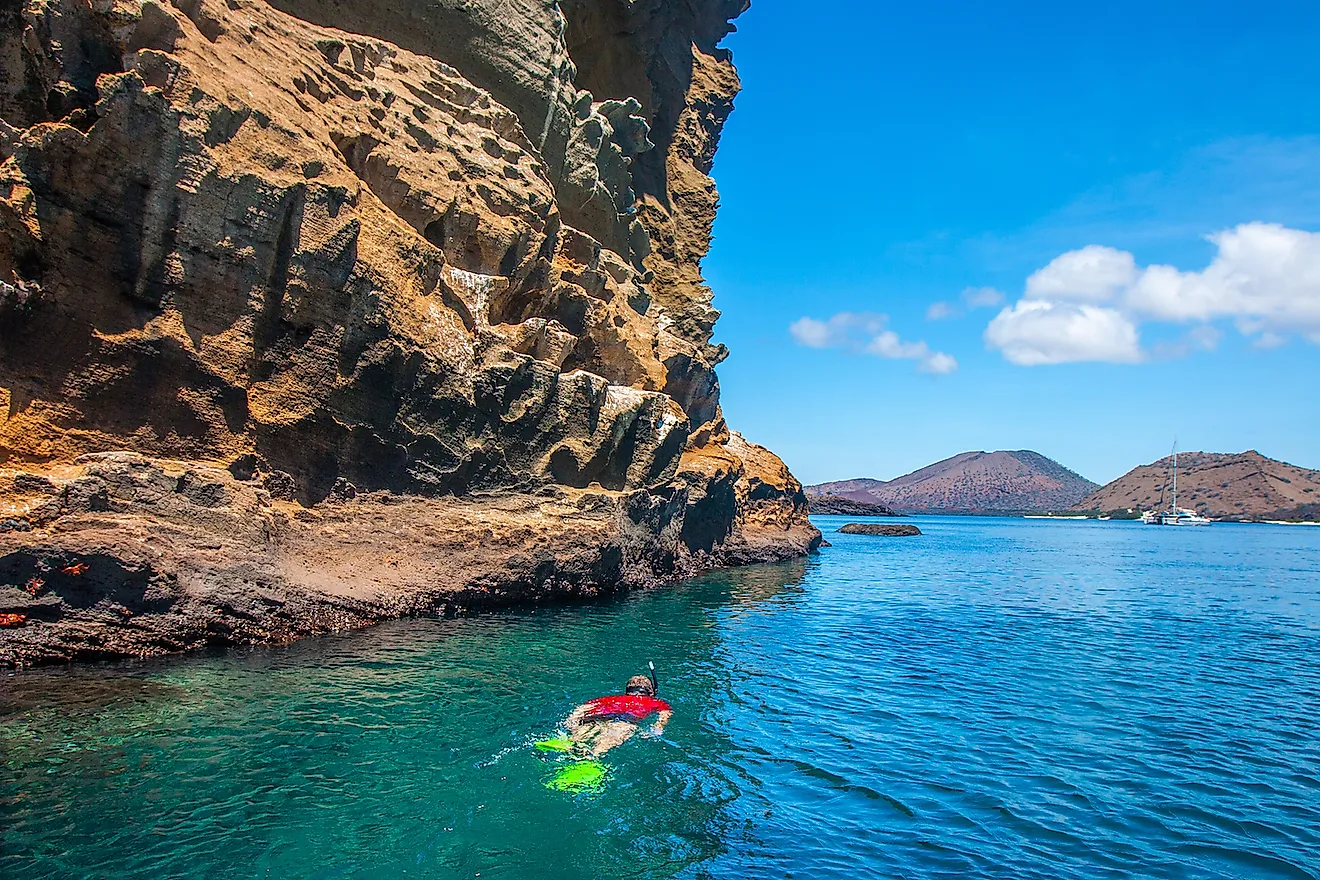
While the largely untouched beaches, volcanoes, and wildlife of the Galapagos are remarkable, they are only half the story. Below the water is a protected marine reserve located at the intersection of sea currents, such as the Humboldt current, that impacts temperatures and attracts diverse sealife, offering visitors some of the best snorkelling in the world. Above the waves, kayakers explore the shore alone or on organized tours, frequently visited by curious seals, sea lions, and birds.
5. Galapagos Tortoise
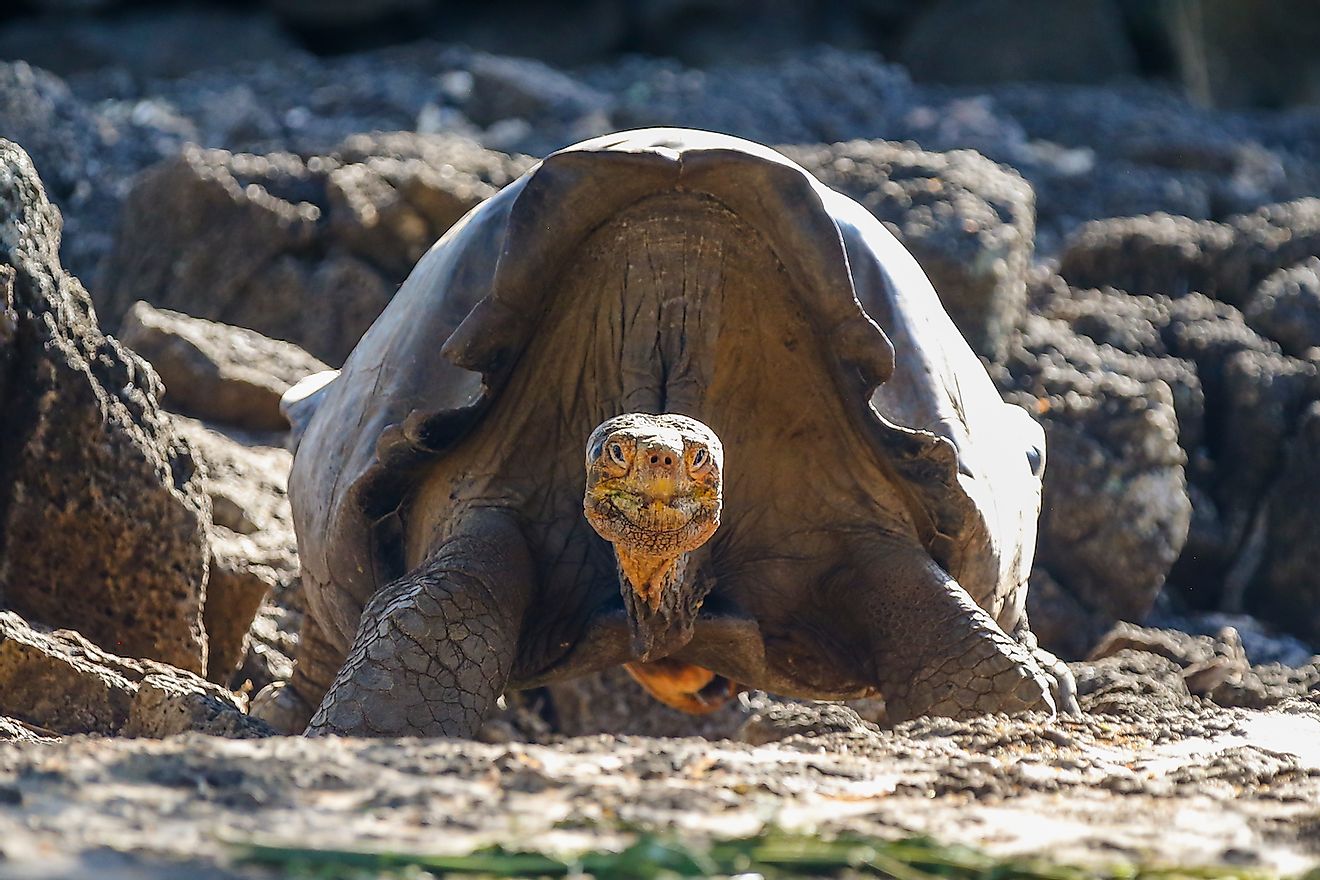
For more than a million years, giant tortoises lived on this tropical island paradise without any predators. Today, due to overhunting and destruction of habitat by humans, the earth’s largest land tortoises are in danger. Efforts are underway to protect the islands’ top herbivores, who can live as long as 200 years and weigh over 660 pounds. Not only are the tortoises themselves famous, but they have famous friends, too. Harriet the Galapagos tortoise was the companion of both Charles Darwin in the 1800s, and television personality ‘Crocodile Hunter’ Steve Irwin in the 2000s, before her death at 176 years old.
4. Flightless Cormorant
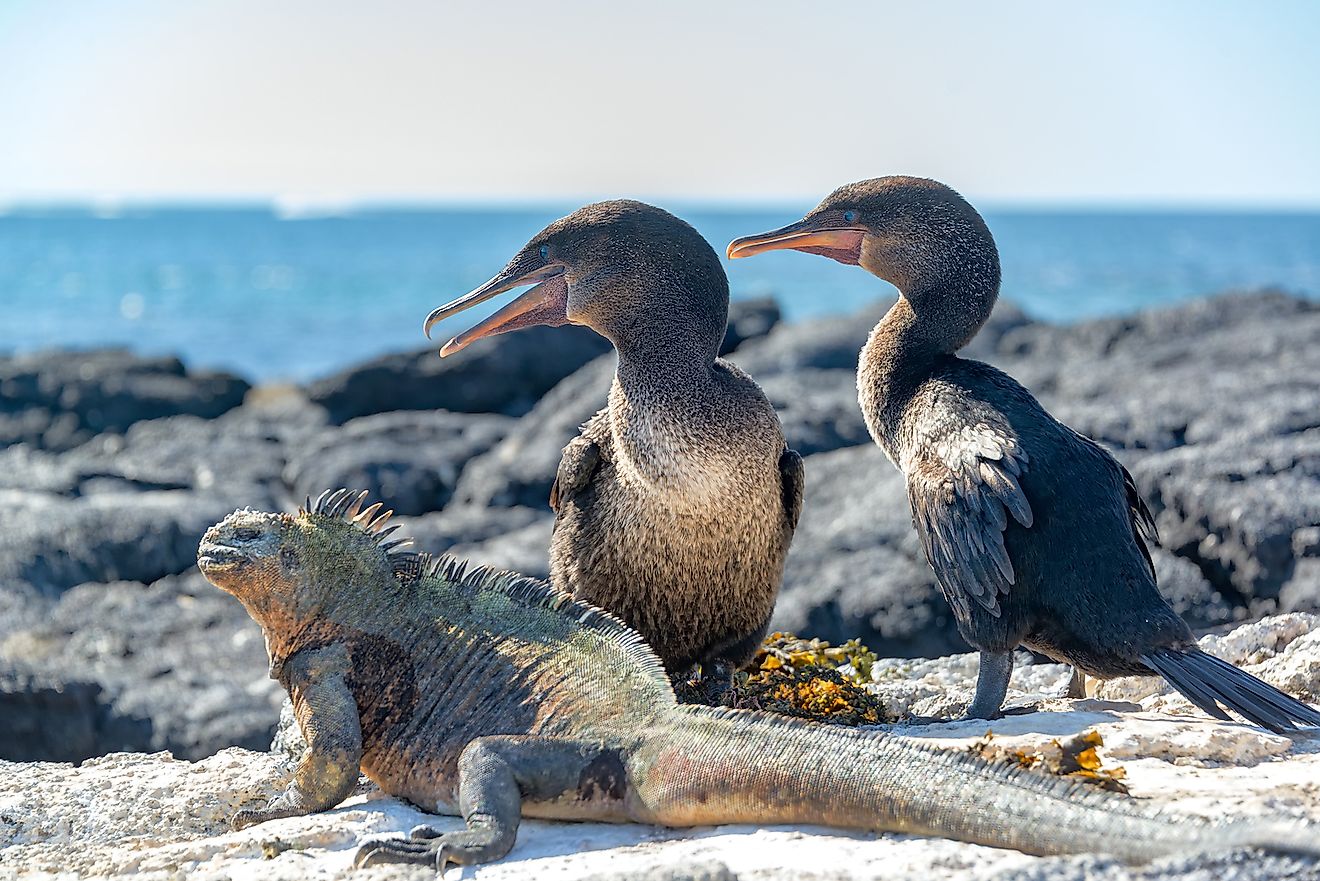
One of the worlds’ largest birds, the Galapagos cormorant (Phalacrocorax harrisi) has adapted to its lack of predators and bountiful seashore food source, by losing its ability to fly and becoming an excellent swimmer. The only flightless cormorant, its webbed feet and strong legs propel it through the ocean in pursuit of its favorite meals of eel, fish and octopus. Endemic to the islands, the only place to view these unique birds is on the Galapagos
3. Galapagos Penguin
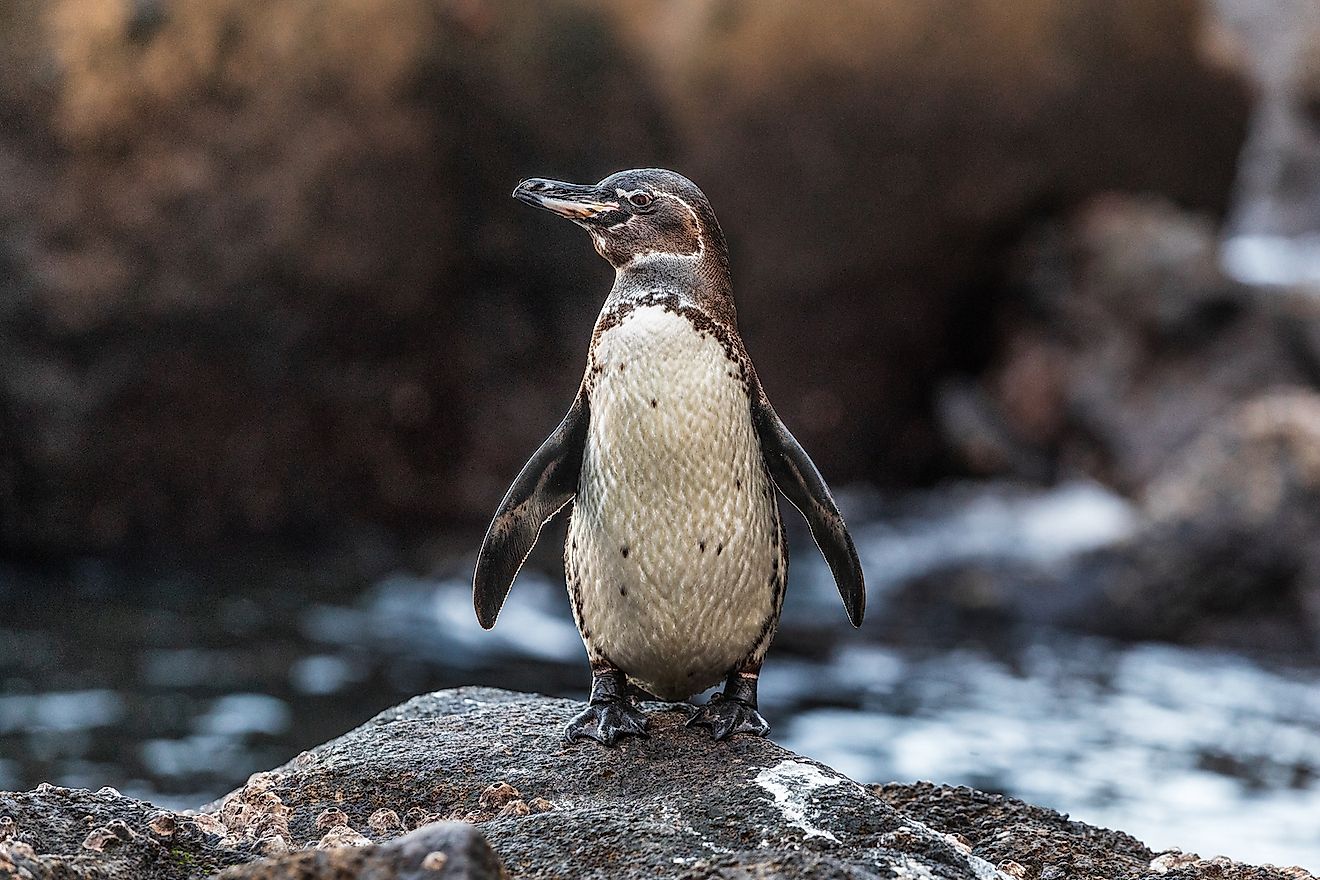
No need to travel to the South Pole, or even the Southern Hemisphere, if you want to see penguins. At just 20 inches long and up to 5.5 pounds, the Galapagos penguin, the only species of penguin residing in the Northern Hemisphere, has evolved with a shorter body, making it easier to regulate temperature and keep cool.
2. Galapagos Iguanas
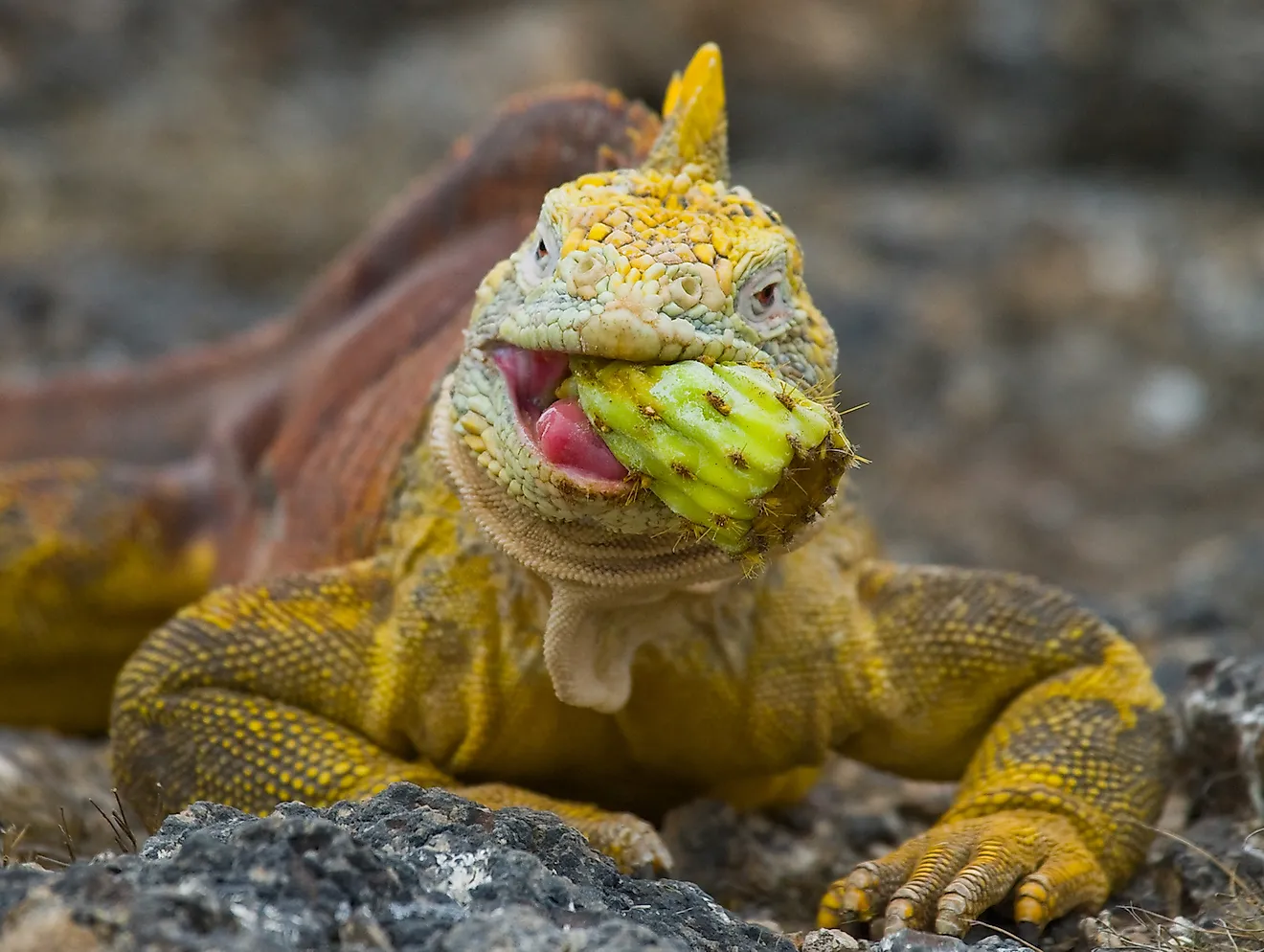
The Galapagos is home to two unique reptile species: the Galapagos Land Iguana and the Galapagos Marine Iguana. Upon his arrival to the island Darwin complained he couldn’t pitch his tent due to too many land iguana burrows. Today these large reptiles with yellow and brown coloring and spiky doral crests are endangered. Also at risk are the marine variety, whom Darwin initially described as hideous and monstrous before discovering these dragon-looking creatures with coppery black skin are harmless herbivores whose favorite pastimes are munching on seaweed and sneezing out salt crystals.
1. Darwin Finches
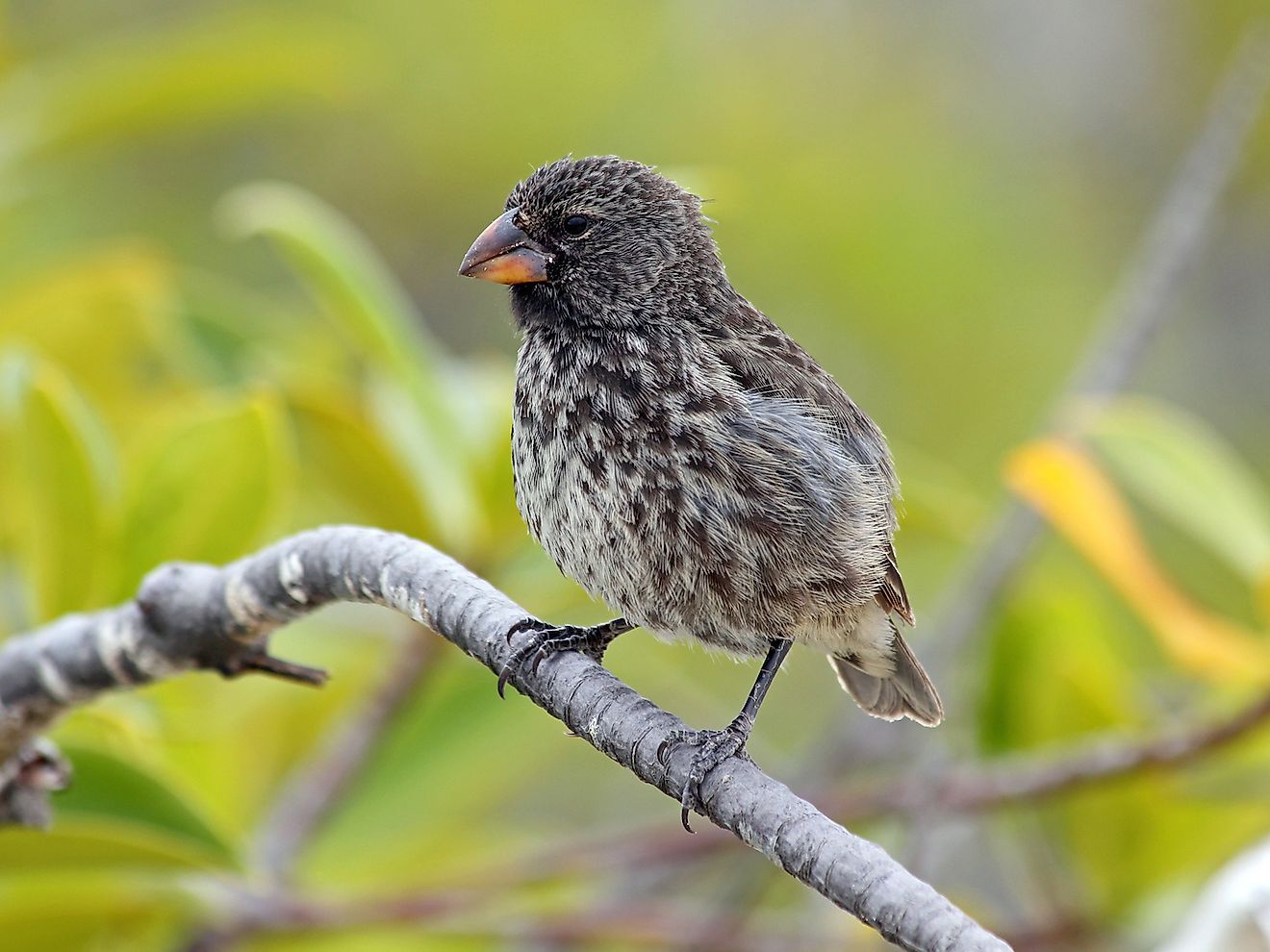
Other avian species endemic to the Galapagos are birds often referred to as ‘Darwin’s Finches’. With over 20 varieties, these specialized birds caught the attention of the famed researcher in the 1800s, and his study of their adaptations, including unusual beak shapes and specialized behaviors and functions, helped him to formulate his theory of evolution. Darwin’s finches vary in size from 4 to 8 inches in length The birds vary in size between 10 and 20 cm and weigh from 0.4 to 1.34 ounces and are still being studies today to better understand the process of adaptive radiation in evolution.











